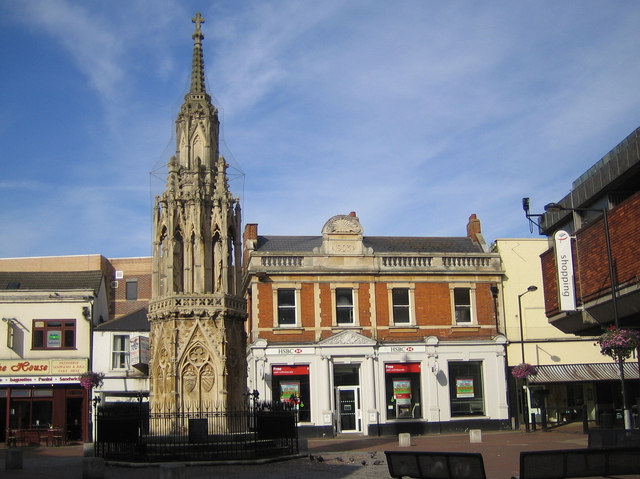Longshanks was six foot two, but I do not know how tall his wife Eleanor was.
Had her husband reached his full lanky extent by the time they married, in his fifteenth year?
Edward Longshanks – or Edward I of England, to you – married the daughter of Ferdinand and Joan, rulers of Castille, in 1254. She was 14, and the marriage was a typical dynastic alliance; yet, against all the odds, Eleanor and Longshanks fell in love.
She stayed alongside him during England’s unrest, and Simon De Montfort ordered her removed from Windsor Castle after she tried to import troops in from Castille to help Henry III and Edward. She accompanied her husband on the eighth crusade, and later on progresses to internal strife in England.
And all the evidence points to the fact that Longshanks loved his Eleanor dearly.
After bearing him 16 children, the available records begin to speak of medication being brought in to help Eleanor with a fever. It never really left her. On a journey up to Lincoln, at a place called Harby, she died, and Edward brought her body back to Westminster Abbey.
Everywhere they stopped for a night on that long dark journey of the soul, Edward had a cross erected. The crosses were unusual: not your average village cross, but intricately carved limestone spires with likenesses of Eleanor gazing outwards. The crosses are now thought to have been to encourage prayers from the common people for dead Eleanor, to vouchsafe her way into Heaven.
Three of these crosses remain to this day. you can still see them, at Geddington, Northamptonshire; Hardington near Northampton; and Waltham Cross, Hertfordshire. The most spectacular, and least meddled with, is Geddington.
And once upon a time, Charing Cross was one of them too.
It was the most expensive: built of marble by the senior royal mason and an Abingdon sculptor. And folklore has it that Charing is a bastardisation of Cher Reine: dear queen.Though the more prosaic point out to the fact that cerring means a bend. The cross survived, standing outside Whitehall, until 1647 when the Reformation got it; though EM Barry”s replacement was put up just outside Charing Cross Station.

Intriguing history. All new to me. Sure makes me glad I’m a modern woman, though. 19 children!
16, PT 😀 The other three would have been the straw that broke the camel’s back….though she died in her forties. I haven’t seen any of the original crosses. Project 🙂
I prefer the Braveheart view of him!
Not quite so lanky….
Beautiful and fascinating story, thanks for sharing. I think I prefer the idea of chere reine as the etymology. 🙂
It would be lovely, wouldn’t it, IE?
Nice story and not a mention of Mel Gibson. He seems to be the reason that Longshanks has come out the shadows. What would we do without Hollywood history?
I’m not a fan of Mel. Or of Hollywood for that matter. Give me a French film any day, Roger…
I always assumed Charing Cross was so named because probably the railway lines crossed there…. well, now I know the true story!
Well, one of the most popular stories, anyway, RMW 🙂
I prefer the Cher Reine version of the story. Poetic and given the tendency of English speakers the world round to adapt pronunciation… Apropos?
Quite, Cameron. Next time I tramp past Charing Cross station in the pouring rain, I shall think of Eleanor.
16 children! Yikes.
16 is a lot, isn’t it? Ouch!
I thank you once again for enlightening me to several aspects of a story I wouldn’t otherwise know, Kate. I loved every word. I found Eleanor and Edward fascinating! And I’m so glad you included a link to the Geddington Cross. I didn’t picture anything so ornate and so large. Doesn’t it just make you cringe to think of all the crosses that were destroyed during the Reformation. What misguided action! I just love the idea that Edward erected these crosses to remind others to pray for Eleanor. I do hope that’s true. I repeat…I love this story!
Hi Debra: yes, the land is littered with proof of the ravages of the Reformation. That, along with Henry’s dissolution of the monasteries, put paid to some our our greatest and most priceless works of art.
It is a lovely story 🙂
Another of these fascinating chunks of history. And there I thought that it was a char made cross by charring? Just as i have tried to pick a dilly circus, but couldn’t even find non-dilly ones there.
Of yours, your interpretation could be the correct one, Col: we will never know for sure. No: dilly circuses are hard to find in the capital, I’ll give you that.
Sadly, I think the etymology is almost certainly ‘Cierring’. Another outside possibility is also Chalons – the land on which Charing Cross Station was built once belonged to Sir Robert Chalons before being bought by the Hungerford Family in 1425. They eventually set up a produce market which occupied the site of the station and Brunel built a bridge across the Thames in 1845 to connect the market with the south bank. The railway company bought the bridge to extend their line north of the Thames, and that is why the railway/footbridge is Hungerford Bridge rather than Charing Cross Bridge.
Etymology – I love learning about the origin of words. Glad that Edward I of England loved his Cher Reine. To bear him 16 children and be by his side in battle. What a catch.
Quite, Judy. Extraordinary woman.